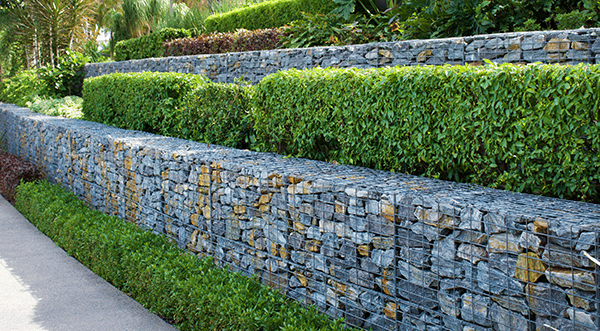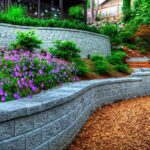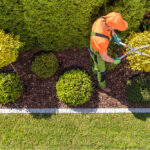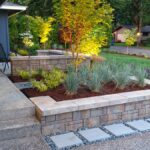There are many homes that could benefit from the placement of Minnesota retaining walls.
While you may understand this to be true, you may also believe there is nothing more to this process than stacking natural stone, or a man-made material.
The fact is, much more goes into the design and creation process of an effective and aesthetically pleasing Minnesota retaining walls.
Getting to know a bit more about this can help you understand why it is so important to find the right professionals for the job.
Types of Minnesota Retaining Walls
There are three main types of Minnesota retaining walls you can install on your property, which include:
- Dry stacked natural stone: This type of wall relies on the stone’s weight and gravity for stability. There is no mortar in a dry-stacked wall.
- Man-made segmental wall stone: This is stabilized by a lip system, pin system or glue for smaller walls.
- A third, less commonly used method is a concrete wall or stone veneered concrete wall.
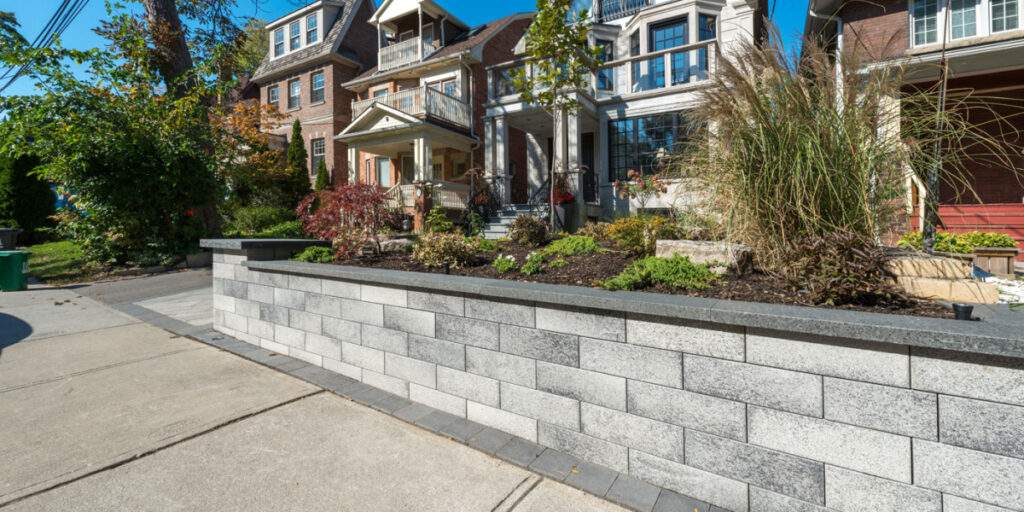
Reasons for Retaining Wall Failure
There are also two main reasons that many Minnesota retaining walls fail:
- The base material under the wall is not compacted properly.
- Poor drainage behind walls can cause hydrostatic pressure to build up behind the wall as water pushes the wall outward.
The Proper Way to Construct Natural Stone Walls
The good news is, a properly installed Minnesota retaining walls should last a very long time.
Construction methods of natural stone walls depend upon the size of stone used. Walls built with 6″ wall stones are constructed differently than 14″ ledge stone.
Also, the maximum height is less with 6″ stone than it is with 14″ stone.
Natural stone walls are charming and builders often use native limestone onsite for a cheap wall option.
The challenge with our native limestone in Minnesota is that it is porous. The porous stone allows moisture into the pores and breaks apart as the water freezes in winter.
This means that although native walls are often more affordable, they will crack and crumble over time. It is important to use a type of natural stone that doesn’t have a high porosity.
Indiana limestone is more durable than our native limestone.
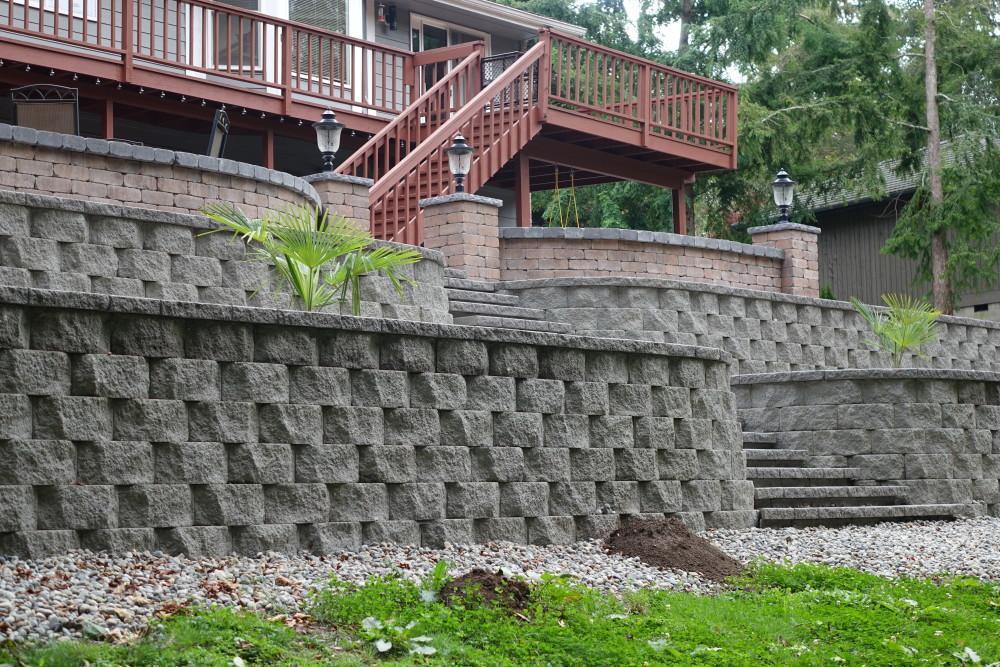
Here’s how Green Grounds Landscaping in Minnesota constructs a 6″ dry-stack wall:
- Excavate trench where base will be installed and install a minimum 6″ of compacted AB-3. (Aggregate with fine and course materials.)
- Base must be compacted in 2″ layers called “lifts”.
- Install first layer of stone below grade to increase stability.
- Continue adding layers, also known and “courses”, to the wall checking the level with every single stone.
- Add a layer of fabric behind wall to prevent soil from washing through.
- Add a minimum 12″ of clean gravel back-fill behind the wall with a perforated pipe at the bottom to transport moisture away from the wall.
- Add topsoil to grade as need.
Helpful Tip: A geo-textile soil barrier placed behind the wall will prevent soils from washing through the wall and is sometimes not included on “cheaper” bids.
The Proper Method for Construction Segmental Walls
Manmade wall systems offer the benefit of engineering that can allow for more retaining power.
Although they tend to be stronger than their natural stone counter parts, they haven’t always offered the same aesthetic appeal.
In recent years, many companies have taken great strides to improve the looks of manmade walls so that consumers can have the durability and beauty they’re looking for.
If you opt for a segmental wall, then there are certain steps your contractor should follow, which include:
- Check the irrigation system, any existing concrete, and foundations and for electrical sources prior to any digging.
- Verify the grade with transit.
- Mark the desired grades with the use of tape and metal rods.
- Excavate for the wall base. If soil is able to be used behind the wall, be sure space is left for gravel and proper drainage.
- Install the AB-3 in trench compacting in one to two-inch layers until the desired six-inch depth is reached.
- Re-enforce the aggregate by laying a ½ inch of dry concrete mix over the AB-3. The concrete must be leveled completely.
- Install the base layer of wall stone ensuring the bottom layer is below grade.
- Build the remainder of the wall by stacking additional blocks on the base level.
- Install caps as needed and glue in place.
Just like the construction of a patio, the construction of Minnesota retaining walls – the right way – will take planning and knowledge.
This is typically not a project an amateur should attempt to do on their own.
If you have any questions or would like to discuss your Minnesota retaining walls project, please contact Green Grounds Landscaping today.

